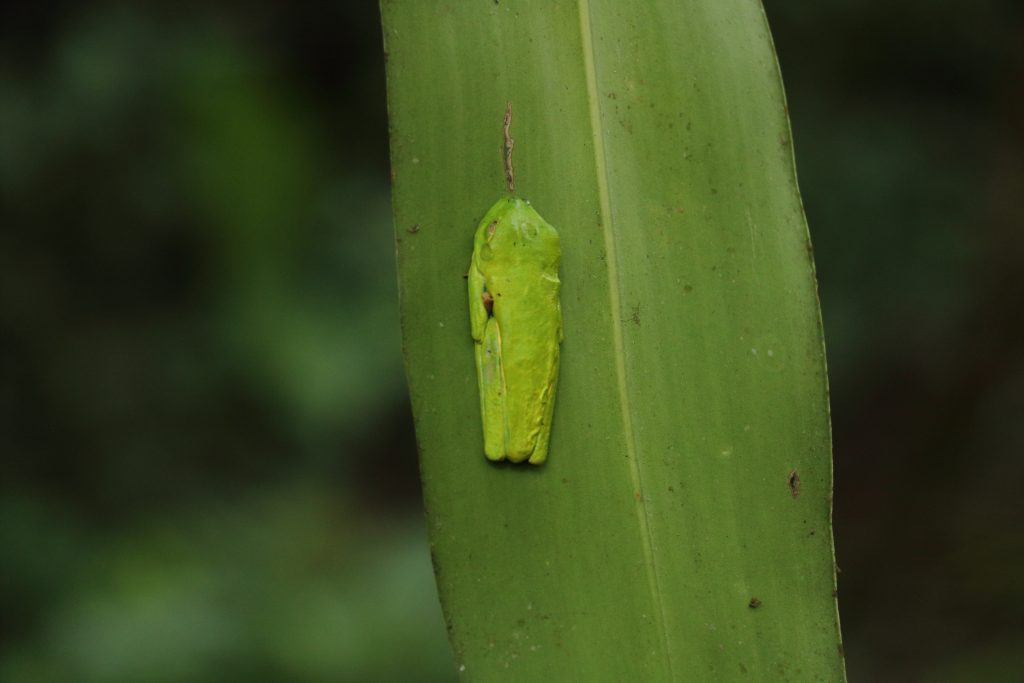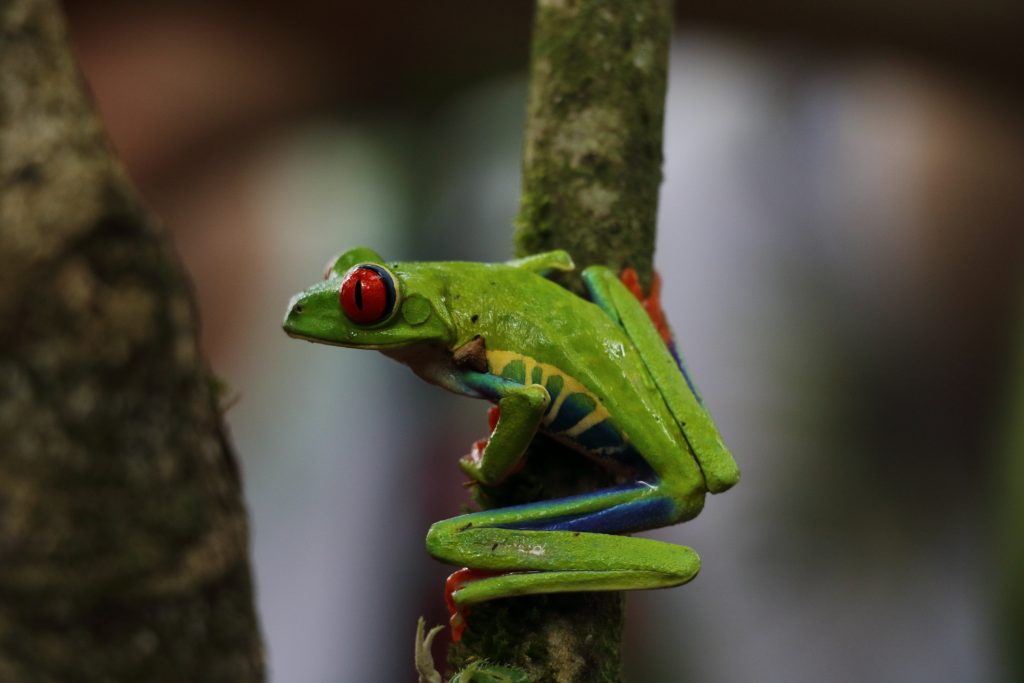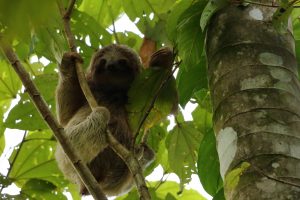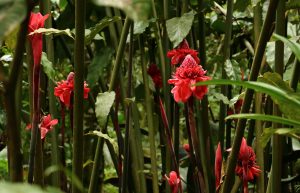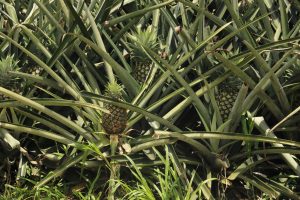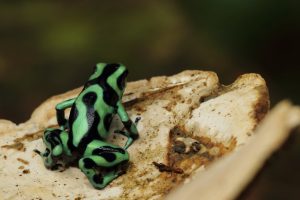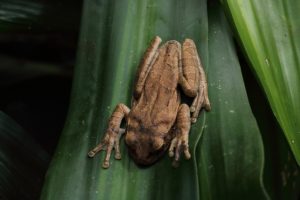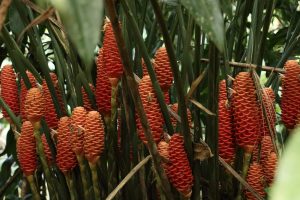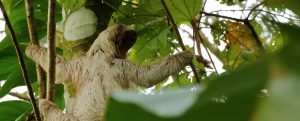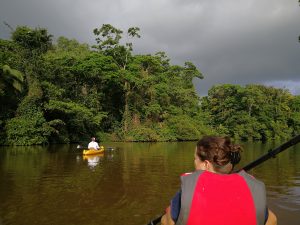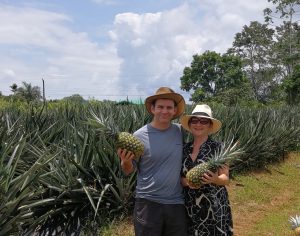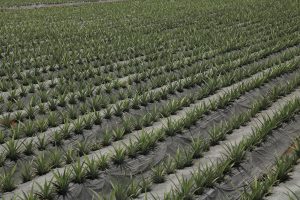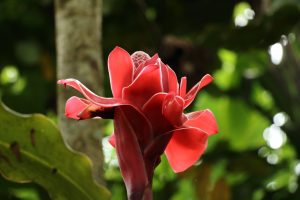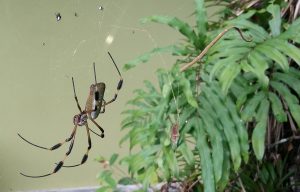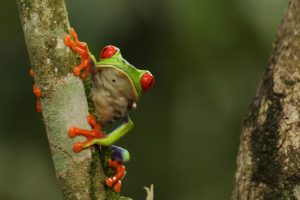Costa Rica’s ubiquitous mantra – Pura Vida (‘pure life’) is on everything here: t-shirts, hats, cuddly toys, hair-clips, flip-flops, wooden turtles, plastic dolphins, pots & pans… you name it, it’s got a bit of ‘pura vida’ scrawled somewhere across it. It works too. The tourists lap it up, so we can’t blame the Ticos for flogging it. But it can give a rather cheesy impression of the country. So far, we’ve toured the south/west of Costa Rica which is just a bit less popular with the ‘pura vida set’ than some other parts of the country. As we head now into a more touristy part of the country, we find some extraordinary wildlife, but still ponder whether this cheesy image of Costa Rica, generated partly by the ‘pura vida thing’, is otherwise justified.

So much to do… pura vida
As we head north out of San Jose, it’s clear there’s lots to do in northern Costa Rica. There’s a reason why it’s such a popular holiday destination for North Americans, Europeans and we’ve even heard quite a few Aussie/Kiwi accents around (sorry… still can’t tell the difference between these). The problem for us, is that unlike anywhere else we have been on our travels, everything here… everything… has been ‘touristified’ (if that wasn’t a word before, it is now 🙂 ).
Over years of attracting holiday-makers from around the world, Costa Rica has turned pretty much anything you can think of, into an ‘eco-experience’ with a hefty price tag. Every mountain village seems to have a jungle-canopy-adventure-zip-wire; anyone with a forested patch of land bigger than a postage-stamp is offering wildlife-experience hikes; there are countless reptile sanctuaries, butterfly farms, bird-watching trips… the list goes on. No opportunity to sell an ‘experience’, large or small, has been missed here in Costa Rica.
The choice for us as overland travellers is to either suck-it-up or move along. We decide to give it a go, enter into the spirit of the place and suck-it-up (for a while at least).
Picking pineapples
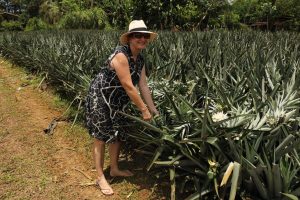
Pineapple picking – the Woman from DelMonte says ‘Yes’
The first little jaunt that catches our eye is a tour of an organic pineapple farm. For a mere US$30 each (we did warn you… hefty price tags here!) we had a one hour tour around the farm in a trailer pulled by a tractor, followed by a lunch-buffet of everything possible to be made from pineapple. Extreme-cheese though the experience was, it was a very interesting extreme-cheese.
We picked pineapples off the plant; saw how they are transported/stored and understood some of the practical problems they face with this; heard all about the business of exporting the fruit and the exacting demands of the EU fruit-market; and learned how this organic plantation differs from a non-organic version. But although we really did learn some interesting stuff here, it’s a classic example of the ‘touristification’ (yup… another word I just made up) concept described above. Everything here in Costa Rica, even fruit farms, have been ‘touristified’ with a pura vida price tag.
Frog Heaven
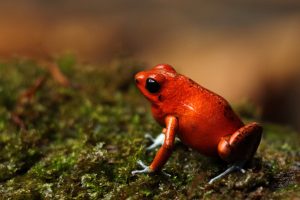 Just down the road from the pineapple farm, an enterprising and engaging young Tico (that’s what Costa Ricans call themselves… Ticos) has touristified his father’s palm farm into a ‘Frog Heaven’ attraction at Horquetas.
Just down the road from the pineapple farm, an enterprising and engaging young Tico (that’s what Costa Ricans call themselves… Ticos) has touristified his father’s palm farm into a ‘Frog Heaven’ attraction at Horquetas.
Jose left home to study nature and ecology at Uni and was fascinated by tropical frogs. Returning to the farm, he persuaded his father to set-aside a piece of the farmland to re-establish some of the jungle that had been cut-back two generations ago for agriculture. In the new jungle he reintroduced some native frogs, which thrived and reproduced in the perfect ecological conditions. The frogs live freely in the trees/undergrowth and as the population and variety of species developed, Jose realised there was some educational value to his project. Not only might local children and schools be interested, but tourists too. Frog Heaven was born and it was such a success that the old farm business was soon consigned to the scrap-heap of commercial history.
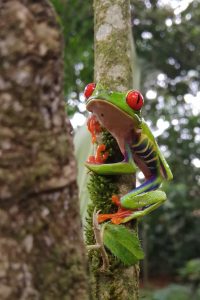
Red-eyed tree frog
The farm income had only ever been barely enough to support the family on a meagre subsistence anyway. The new froggy enterprise generates enough money to support not only Jose and his own young family, but his father and his brother too. The frogs are totally free to hop away if they wish, but Jose has created a ‘frog heaven’. Why would they want to leave that, eh?
The family monitors the frogs’ movements, so they know exactly where to take visitors to see them. If the frogs bury themselves a bit into the undergrowth, Jose sprinkles some hose-water over the areas like rain, and the little chaps come hopping up to the surface – a sight both remarkable and amusing at the same time. There are many colourful little frogs (including the gob-smackingly beautiful and icon of Costa Rica, the red-eyed tree frog) plus snakes, toucans, sloths, all living totally wild on Jose’s land – not a cage or reptile-case in sight.
- Can you believe that this…
- wakes-up into this??
Although Jose’s Frog Heaven initially appears to get lost amongst the hundreds of Costa Rica pura vida road-side signs for reptile parks and ‘eco-experiences’, this one really does stand out as different and a very worthwhile $20 per person. Good skills, Jose!
Tortugero
On the Caribbean coast of Costa Rica is the coastal village/national park of El Tortugero. It’s not accessible by road, so we leave Cuthbert our camper-truck at a small river-port and take a boat for an hour or so down to the coast. It’s a tiny village but here yet again, is a massive destination of opportunity for the Costa Rica pura vida touristification. Tortugero is one of Costa Rica’s most popular tourist destinations… there must be a reason for that. Feeling optimistic after our Frog Heaven tour, we decide yet again to suck-it-up and have a look.
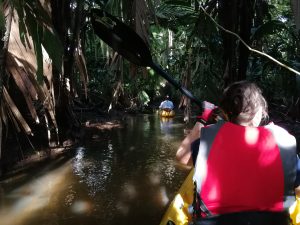
Following the kayak guide into the jungle
One of the key attractions here is turtle nesting, but we know we are out of season for that. Another attraction is the wildlife of the jungle and the water-ways of the national park. We decide to hire a guide and some kayaks to paddle ourselves around. It was a lovely trip and Augusto took us through some very cool tiny waterways, weaving through dense, flooded jungle, ducking under low trees and fighting off encroaching vines with our paddles. We saw some great wildlife: monkeys, caimans, birds and a huuuuuge boa-constrictor snake; we learned a lot from the guide who was a mine of interesting information. But again, the Cost Rica pura vida ‘eco-experience’ comes at a price… a US$80 price to be precise (for two people). Eeisshh!!! We won’t be doing any more of this kind of stuff for a while 🙁
Home is where you park it
For us one of the biggest ‘things’ with Tortugero was not having our beloved Cuthbert. We had to check into a small hotel. It was pleasant enough, nice room and facilities, but we almost never do this and we don’t particularly like doing it. Over four years of overlanding travel in Cuthbert, we have never checked into a hotel or AirBnB simply for a bit of extra comfort, as many travellers do. We have never felt the need to do this and on the few occasions that we have decided to leave Cuthbert, it has been for some extraordinary off-shore trips such as: Antarctica, Easter Island and Galapagos.
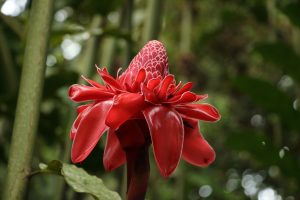
Beautiful (but still don’t know what it is!)
Living as we do, with our home wherever we go, we have become accustomed to having everything we need, wherever we are. Consequently, we’ve become particularly bad at packing to go away. We had this skill ‘off-pat’ when we were busy, frequent traveller workers. Now we always seem to take too much of what we don’t need and forget things that we do need. Exciting though the side-trips can be, we’re always reluctant to leave Cuthbert and happy to get back home afterwards.
Anyway… back in Cuthbert we’re heading back to the capital San Jose again. We’ve had enough of this pura vida touristified stuff for a while. It’s time for a few city days and a catch-up with our new friends Mike and Geneva Saint-Armour. This lovely American overlanding couple are heading southwards in their camper-truck down towards South America under the fabulously inspired tag of ‘It’s not a slow car it’s a fast house’. Cool huh?
San Jose is far less touristy than much of Costa Rica. Sure, there are many expats and some tourists here, but somehow we feel to be more amongst a real, working community and (maybe deceptively) we feel less exploited as tourists. There’s a blissful absence of any canopy-zip-wires or eco-experiences here in the city and a lot less pura vida stuff. It’s a nice little break before we head out-and-about for some more pura vida, the tales of which will come winging their way to an interweb-device near you… soon.
- Curious…
- cof
- sdr

